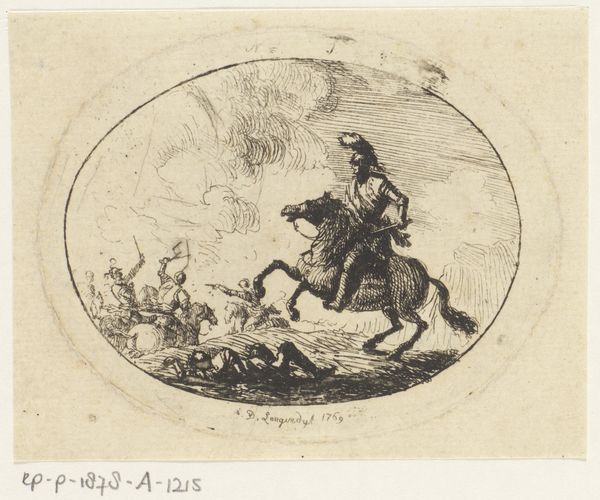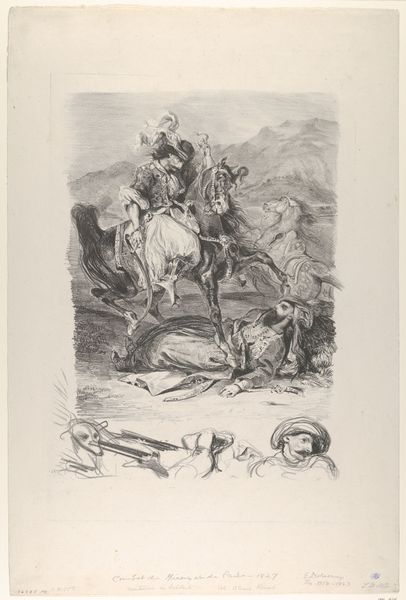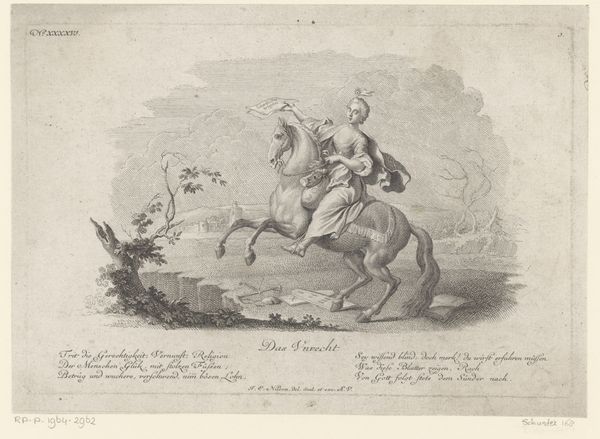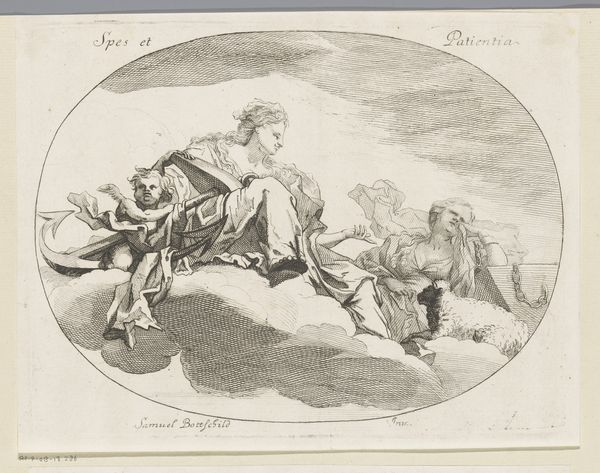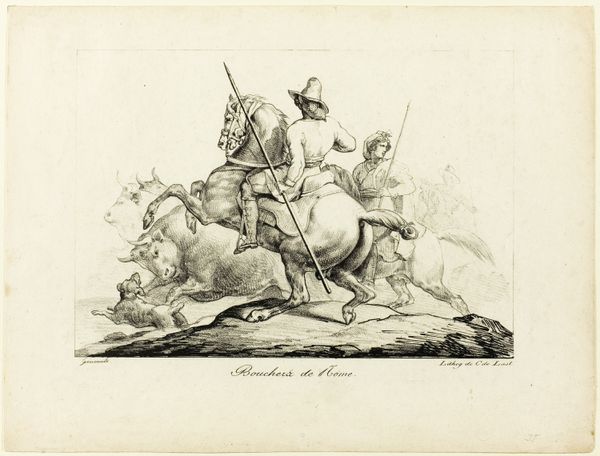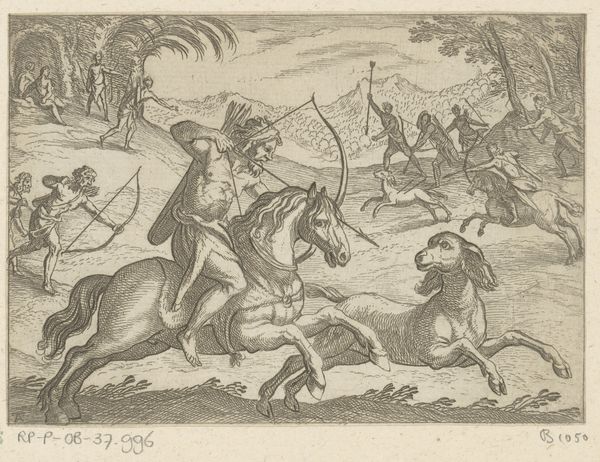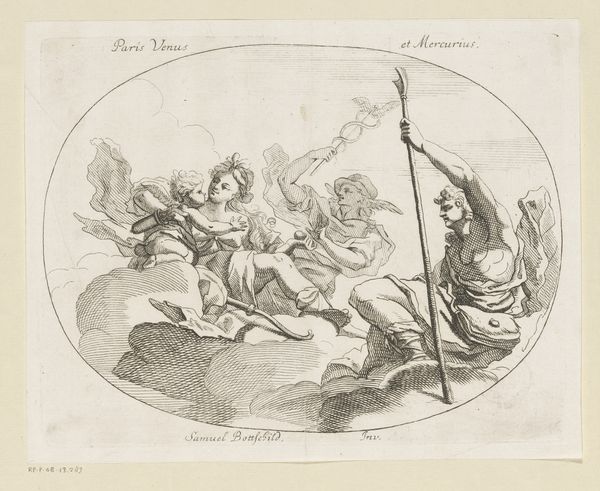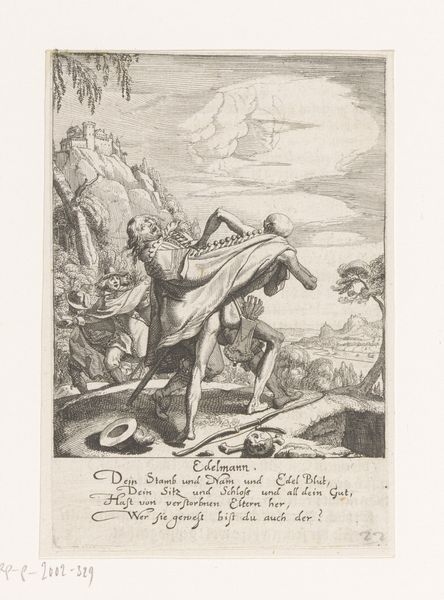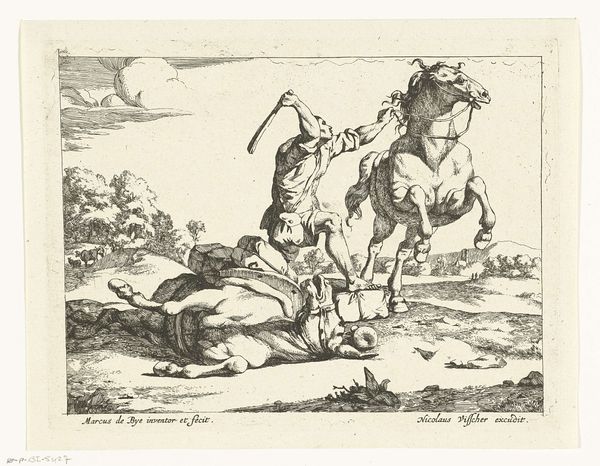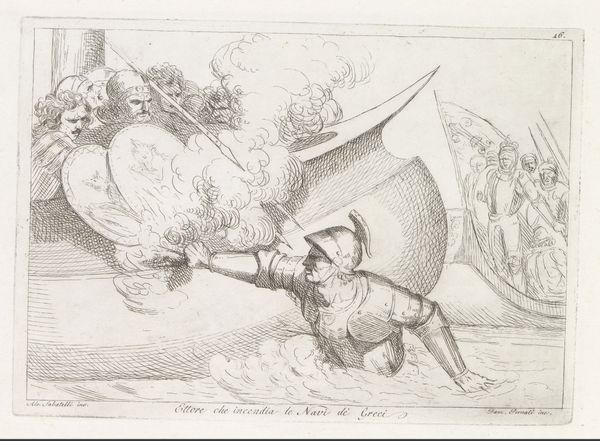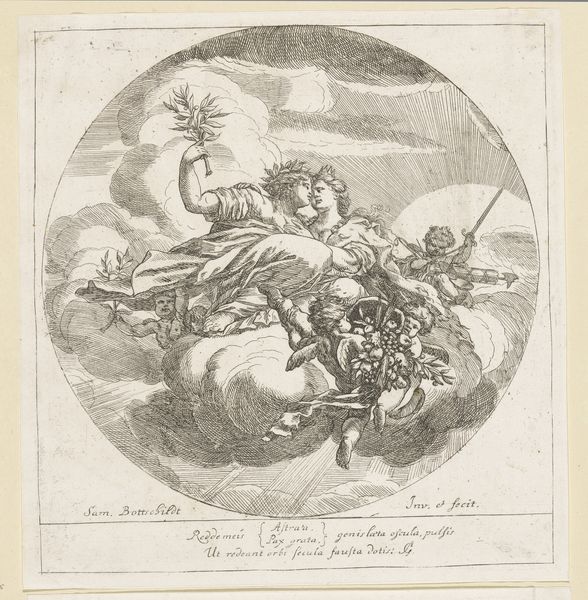
print, engraving
#
allegory
#
baroque
# print
#
figuration
#
line
#
history-painting
#
engraving
Dimensions: height 190 mm, width 243 mm
Copyright: Rijks Museum: Open Domain
Samuel Bottschild etched "Pallas et Junone" sometime before his death in 1706. We see Pallas, or Minerva, goddess of wisdom, and Juno, queen of the gods, amidst clouds charged with symbolism. Consider Juno's shield, bearing the face of Medusa. This potent symbol, originating in ancient Greece, serves as both protection and a terrifying display of power. Medusa, once a beautiful maiden, was cursed, her hair turned to snakes, her gaze capable of petrifying onlookers. The image of Medusa transcends its mythological origins, reappearing throughout art history as a representation of primal fear. The torch, held aloft by a cherubic figure, signifies enlightenment. This symbol, potent in ancient rituals, evolves over centuries, finding its way into emblems of revolution. Like an echo, it appears in different guises, a testament to the cyclical nature of human thought, forever imprinted on our collective memory. The torch speaks to our subconscious—a beacon that, in its constant recurrence, compels us.
Comments
No comments
Be the first to comment and join the conversation on the ultimate creative platform.
